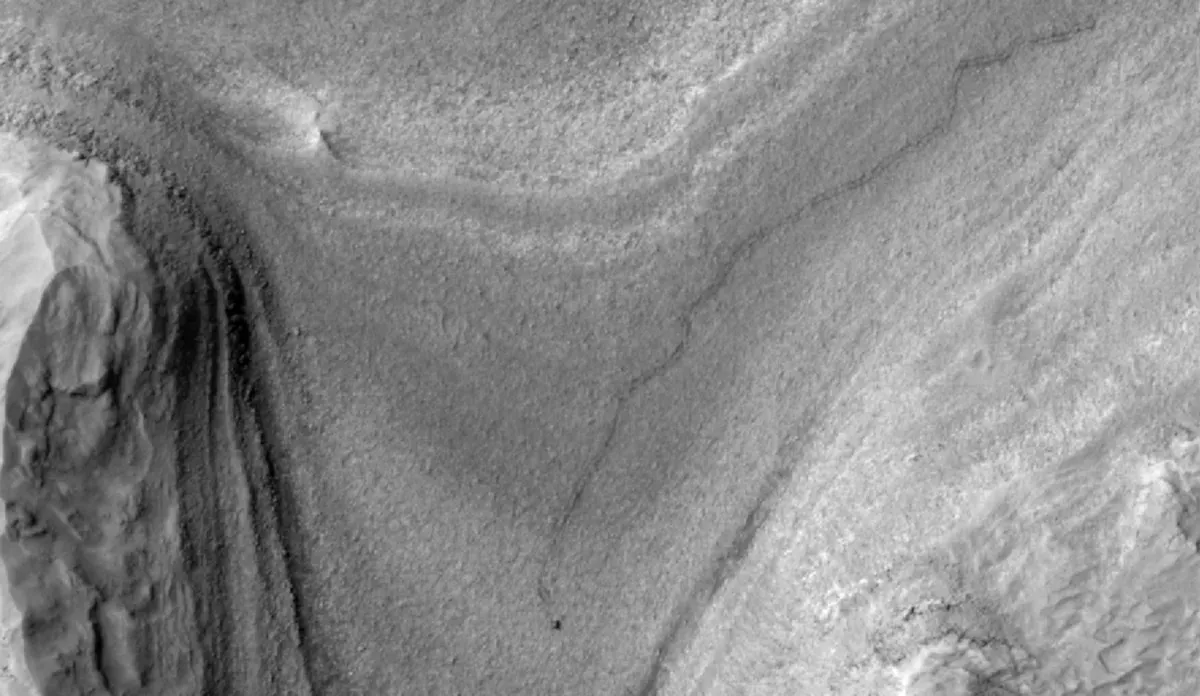
The Curiosity Mars rover has been making significant progress on its exploration of Mars, even with a maximum speed of only 0.1 mph. A recent photograph captured by NASA’s Mars Reconnaissance Orbiter offers a stunning visual representation of the rover's journey throughout this year. The image illustrates the path Curiosity has carved as it travels from its last science target, known as the Gediz Vallis channel, to its upcoming destination.
In the remarkable photo taken on February 28, the rover appears as a small speck at the front of a trail measuring approximately 1,050 feet long. According to NASA, this image is believed to be the first orbital view of the rover mid-drive across the Red Planet. The image was captured using the orbiter’s HiRISE (High-Resolution Imaging Science Experiment) camera, showcasing Curiosity's movement over a series of 11 drives that began at the start of February.
While a few weeks might seem like a long duration for tire tracks to remain visible, this phenomenon is quite typical for the Martian environment. NASA states that the tracks left by the rover are likely to endure for months before they are eventually erased by wind. This durability of the tracks allows scientists and enthusiasts alike to trace the rover's path and understand its exploration efforts.
Curiosity is on its way to its next significant science destination, which is believed to house geological formations thought to have been formed by ancient groundwater. This upcoming site promises to provide valuable insights into Mars' past and its potential for sustaining life. As Curiosity continues its exploration, it remains a vital tool in unraveling the mysteries of the Red Planet.
Stay tuned for more updates as the Curiosity Mars rover embarks on its next adventure, contributing to our understanding of Mars and its history.